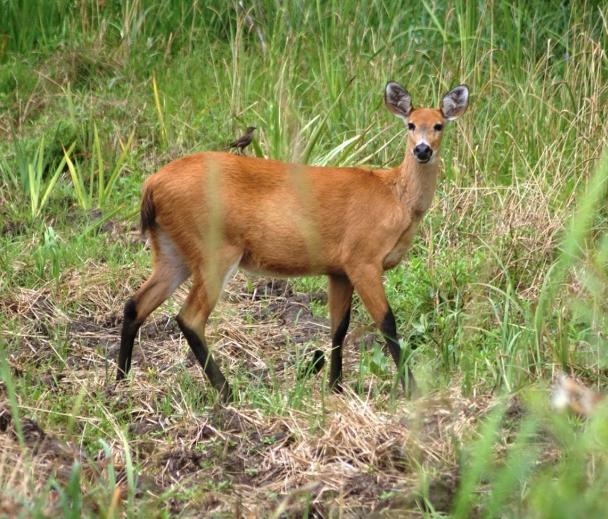Maria de las Mercedes Guerisoli
Damage caused by cervids in forestry systems is mainly through bark stripping and browsing. In the Lower Delta of Paraná producers report damage caused by marsh deer on commercial plantations. We proposed to evaluate different stimuli to attract/repel this species on forest plantations, in order to develop a divergent stimulus system "push-pull". Stimuli of repulsion and attraction will be tested on willow, poplar and/or wicker plantations with damage caused by deer. This design is presented to reduce levels of damage, decreasing the human impact on this species and facilitating the coexistence of this deer with forestry activities.

Damage caused by wildlife to agricultural and forestry production is a serious concern among producers worldwide. This interaction has important implications for the sustainability of economic activities and for the conservation of wildlife. Ungulates, particularly deer, can cause serious damage to forest plantations. The level of damage caused depends on the behavior involved; for example, some forest varieties are more palatable to these ungulates and are therefore more affected by browsing, while other commercial species may be more prone to bark depopulation - scraping behavior associated with antler replacement or territorial marking. As a result of these behaviors, the productivity of the affected forest species or the wood quality can decrease, which leads to economic losses.

Marsh deer is categorized globally as "Vulnerable" and in the Lower Delta of Paraná River (LDPR), forest producers are reluctant to tolerate the presence of this deer in their plantations, justifying their claim that these ungulates use forest plants as food and bark trees with their antlers, generating important economic consequences. We believe is a priority to start testing mitigation techniques in this area in order to minimized the impact of humans on this species which find its southern distribution in this study area.
The primary outcome expected to produce is the mitigation of deer damage on forestry plantations and, consequently, an decrease mortality rates in the LDPR. Additionally, it is expected that forestry production will be increased by limiting browsing and/or barking caused by deer and by the application of low cost and accessible “push-pull” system.
The main expected results are:
- To identify economically accessible “push” (i.e. odoriferous repellent, visual stimulus) and “pull” (alternative rubbing surface) methods which will be easily self-installed by the producers.
- To identify willow varieties with low or null economic value to use as attractive stimulus.
- To set a successfully “push-pull” system in, at least, five proprieties of small producers in the study area in this project.
- To improve the perceptions of agricultural and forestry producers on the marsh deer by the mitigation of damage and by the ecological valorization of this endangered species.